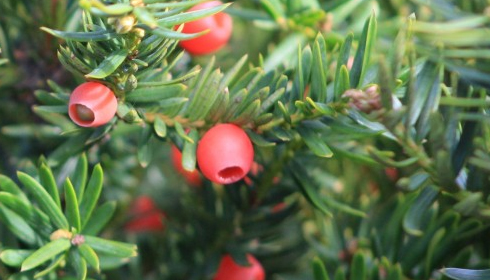
Himalayan Yew disappearing fast from Kashmir Himalayas: Expert
The Himalayan Yew, a vital plant for cancer therapy, is on the verge of extinction in the Kashmir Himalayas, say local media quoting experts.
Taxus wallichiana is a source of the chemical precursors to the anticancer drug paclitaxel, a highly potent cancer treatment and is routinely used to treat a variety of malignancies, including breast, ovarian, and lung cancer. The plant, also known locally as Ustul, Birmi, orthunner, belongs to the gymnosperms group, according to Dr Akhtar Malik of Kashmir University.
Paclitaxel acts by inhibiting cancer cell growth and division. It accomplishes this by interfering with the function of the cell's building blocks, known as microtubules. When these microtubules fail to function properly, cancer cells cannot proliferate, which helps to limit or stop the progression of the disease.
Its European cousin, TaxusBacata, was the first to be identified as having cancer-fighting properties. Taxol is an anti-cancer drug produced from Taxus Bacata and Taxus wallichiana.
The plant attracted interest due to its potential for cancer treatment. Initially, it was thought that taxol was taken from the tree's bark, but it was later discovered that the tree's needles (leaves) also contain important components for cancer treatment.
Despite its tiny size and inclination for higher altitudes ranging from 6600 to 7100 feet above sea level, the Himalayan Yew, locally known as Ustul, tree is encountering challenges as global demand increases. Smuggled bark has killed hundreds of trees, reducing the population of the species. Locals involved in smuggling are paid relatively little, according to the scientist, whereas brokers strike gold in foreign markets.
The International Union for Conservation of Nature (IUCN) has designated Himalayan Yew as an endangered species. Dr Akhtar warned that if necessary precautions are not taken, the tree could become highly endangered and, finally, extinct. The Department of Botany at the University of Kashmir is working on tissue culture, while the Department of Forest is focusing on large-scale plantation initiatives to save this endangered tree.